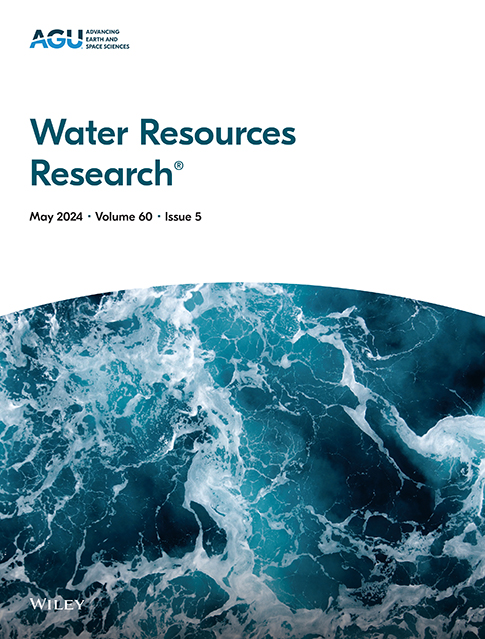冲击射流对泥沙治理的侵蚀与沉积演化
IF 5
1区 地球科学
Q2 ENVIRONMENTAL SCIENCES
引用次数: 0
摘要
大坝是重要的水利基础设施,其主要用途可能因泥沙淤积而受到损害。这会导致储存量的损失,影响河流的泥沙通量和形态。但是,可以实施沉积物管理策略来减少这些影响。我们的目标是描述和量化注水疏浚的理想化和简化的物理模型的关键过程,适用于沉积物管理技术。进行了三组实验,改变了以下参数:(a)射流流量;(b)射流角;(c)床角。利用实验获取的剖面图像,分析了主要物理过程(冲刷孔形成、泥沙悬浮发育和下游沉积)的时空演化。根据射流与浊度流的连接方式,我们确定了两种不同的传输模式,每种模式都与冲刷孔发展的不同阶段有关。在我们的实验中,射流的出口速度(动量)的床垂直分量是形态演变的主要驱动力。在冲刷孔和下游沉积物的纵剖面上证明了自相似性。最后,我们讨论了本研究的实际意义,如材料的净位移,缩放和局限性。这项研究有助于开发创新的水库和其他水工结构的泥沙管理策略。本文章由计算机程序翻译,如有差异,请以英文原文为准。
Evolution of Erosion and Deposition Induced by an Impinging Jet to Manage Sediment
Dams are important water infrastructure whose main purposes can be compromised by sedimentation. This causes loss of storage volume, affecting river sediment fluxes and morphology. However, sediment management strategies can be implemented to reduce these impacts. Our goal is to characterize and quantify key processes of an idealized and reduced physical model of water injection dredging, applicable as a sediment management technique. Three sets of experiments were conducted, varying the following parameters: (a) jet discharge; (b) jet angle; (c) bed angle. The spatio-temporal evolution of the main physical processes (scour hole formation, sediment suspension development, and downstream deposition) was analyzed using images of profiles acquired during the experiments. We identified two distinct transport modes depending on how the jet flow connects with the turbidity current, each associated with different stages of scour hole development. In our experiments, the bed-perpendicular component of the exit velocity (momentum) of the jet is the primary driver of the morphological evolution. We demonstrate self-similarity in the longitudinal profiles of the scour hole and downstream deposit. Finally, we discuss practical implications of this study, such as the net displacement of the material, scaling, and limitations. This research contributes to the development of innovative sediment management strategies for water reservoirs and other hydraulic structures.
求助全文
通过发布文献求助,成功后即可免费获取论文全文。
去求助
来源期刊

Water Resources Research
环境科学-湖沼学
CiteScore
8.80
自引率
13.00%
发文量
599
审稿时长
3.5 months
期刊介绍:
Water Resources Research (WRR) is an interdisciplinary journal that focuses on hydrology and water resources. It publishes original research in the natural and social sciences of water. It emphasizes the role of water in the Earth system, including physical, chemical, biological, and ecological processes in water resources research and management, including social, policy, and public health implications. It encompasses observational, experimental, theoretical, analytical, numerical, and data-driven approaches that advance the science of water and its management. Submissions are evaluated for their novelty, accuracy, significance, and broader implications of the findings.
 求助内容:
求助内容: 应助结果提醒方式:
应助结果提醒方式:


